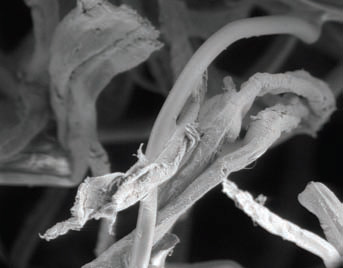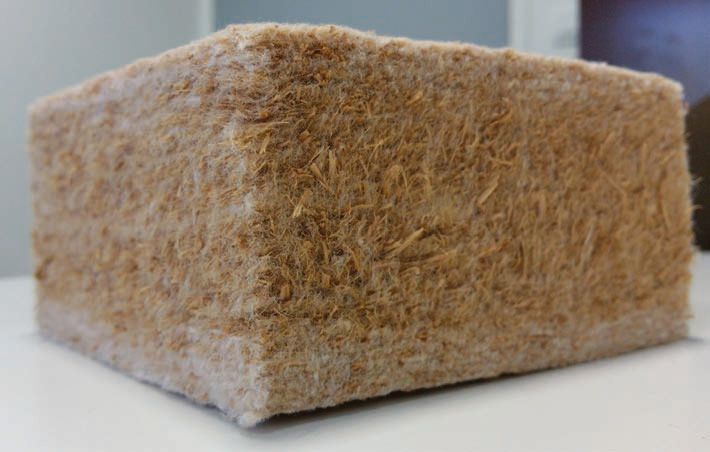The fibre market could be warming up
23 March 2016I am writing this article in early January; a time that is normally quite cold, but is, at the time of writing, rather mild in France and across western Europe as a whole. Even so, I am glad to be inside a well-heated and insulated building.
Wood is a good thermal insulator because it is cellular in structure and has organic polymers that are largely oriented in the direction of tree growth. Even so, wood fibre, as opposed to cellulose fibre, has only about 2-3% of the fibre insulation market: clearly there is room for growth.
There is a research project in France called ECOMATFIB which aims to optimise existing wood fibre insulation products and potentially to develop new ones.
The approach being taken is to make a detailed study of the product's structure and, in particular, the interaction between the wood and synthetic fibres in the product.
The synthetic fibres are needed because wood fibres are too short to be able to form a low-density product on their own.
For instance, MDF and hardboard-type products can be made with only wood fibres because the hot-pressing step compresses the fibres sufficiently for there to be good surface contact between neighbouring fibres, thus allowing them to stick together.
In low density products, such as insulation panels, there are large air gaps between fibres (see Figure 1 and Figure 2) and so longer synthetic fibres are incorporated in order to provide a net, to hold the wood fibres and to bond them together.
Heat is transferred by radiation, convection (gas transfer) and conduction. All three need to be optimised to make a good insulation product.
A very low density product would have low thermal conduction but potentially high radiation and convection. A high density product, such as MDF, would have almost no radiation transfer and little convection, but much more conduction.
So, measuring the pore sizes, and the frequency and number of fibre contact points, will provide the information necessary for a more accurate model of thermal performance. The research consortium is also applying some novel multi-objective optimisation techniques to this challenge.
The thermal conductivity of solid wood across the grain is dependent on the density of the species and ranges from about 0.05 to 0.17W/mK. Still, dry air has a thermal conductivity of about 0.025W/mK - much less than wood.
However, in the real world, air is rarely dry, or still.
Glass wool insulation performs well because it traps the air to achieve a thermal conductivity of about 0.04W/mK. ECOMATFIB's target is to make a product that performs at least as well as that.
The worst of the winter should be over in the northern hemisphere by the time you read this and I hope that we will all be less preoccupied by heating and insulation and looking forward to enjoying the great outdoors.

